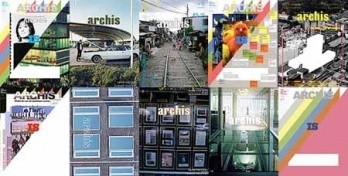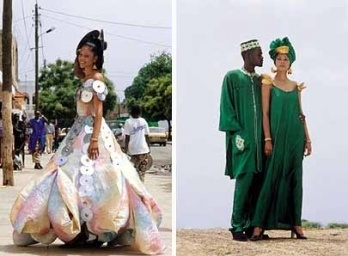
Capas da revista Archis
Ole Bouman, editor-in-chief
Ana Paula Baltazar
More and more architecture has been practised and discussed as culture. One of the most well known international manifestations of this architectural tendency can be seen in the magazine Archis, whose editor-in-chief is Ole Bouman. Despite its original Dutch origin the international character of the discussions brought about by the magazine is out of question, and this is due to the relevance of the Dutch architecture and urban policies in the worldwide scene. Until the year 2000 Archis was published by NAi (Dutch Institute of Architects), and although it always presented issues of international interest, it was a publication in Dutch followed by a secondary English translation. From the beginning of 2001 Archis has been published by Artimo and the English version shifted from lateral activity to an independent volume. This shift in format also affected Archis' content, which now apart from looking at nationalist issues also looks at a broader world scene. According to the Doors of Perception magazine (www.doorsofperception.com) the new Archis, which has been published for a year, more than doubled its circulation and the distribution of the English version has been a success, multiplying the number of readers.
The difference between Archis and other publications is its flexible and experimental character. Most publishers would only support projects with a very specific and well defined audience, in order to guarantee the financial success of the publication. In Archis' case the audience is not pre-defined in the traditional model, that is, the reader of this magazine is the one who questions the directions of the environment where s/he lives, is the one who is interested in what is happening with her/his space, the reader is not statically defined, s/he is in movement, in constant transformation. Archis' formula of success seems to be connected to keeping the simplicity and the flexibility and to experiment. No to celebrity interviews, no to the limitation of buildings as objects of desire, no to intimidating images, no to conventional design. Ole Bouman acknowledges how fortunate they are by having Artimo as publisher, once this publisher is interested in new cultural practices and also in reaching a flexible audience.
The flexibility of Archis permeates both form and content. The themes proposed and discussed are always challenging, approached in a critical way seeking to show a broader cultural picture than that of the building itself as an object. According to Ole Bouman, Archis' mission is to identify the topics overlooked by other architectural publications, what is happening with the process of building here and now, and its cultural implications.
Among the socio-cultural provocations of the magazine, both in form and content, is that published in the issue 4, which was dedicated to architectural education, where some of its pages had slogans that could be printed in T-shirts. One of the slogans was in reference to the use of students as cheap labour in architectural practices, and read: "I am a super talented young intern/slave". Another one read: "I am busy making my / his name". Through humorous provocations and short but very rich articles, Archis has been conquering more and more its place as one of the rare architectural publications that is really flexible and dynamic in its signification. My interest in Ole Bouman's work is fundamentally due to the way Archis 'walks the talk' of flexibility and dynamics, which can be experienced in its format, perceived in its content, an mainly, are assumed as features of the reader, who is not considered as a pattern, a passive subject, but an individual inserted in a cultural environment and as such s/he is always in movement, constantly transforming and being transformed.

Designs de Oumou Sy, Dakar. Archis Dezembro 2000



